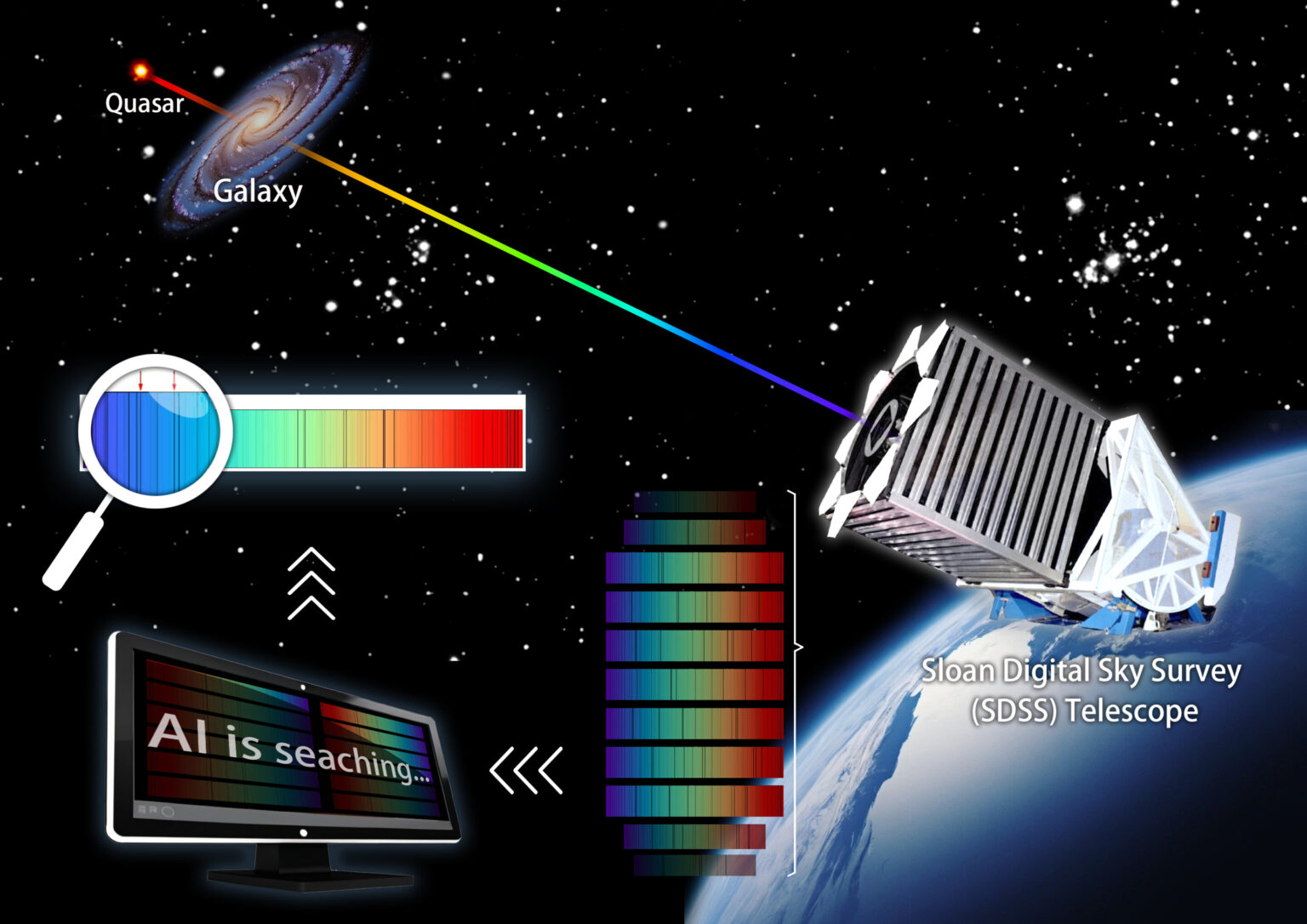Chinese researchers have used an artificial intelligence system to find extremely weak absorption lines in the spectra of quasars. They were able to determine the presence of neutral carbon in very distant galaxies. It is a sign that even at the beginning of their history, galaxies experienced intense evolutionary processes.

Artificial intelligence found signs of carbon
Recently, an international group of scientists led by specialists from the Shanghai Astronomical Observatory of the Chinese Academy of Sciences searched for rare weak signals in the spectra of quasars. To do this, they used the latest published data from the Sloan Digital Sky Survey.
A feature of the new work was the use of artificial intelligence in it. Scientists were interested in neutral carbon absorption lines. Their presence is an excellent indicator that intense evolutionary processes are taking place in the galaxy. Old stars die and new ones are born.
The problem is that these absorption lines are extremely rare and difficult to identify. They were first found only in 2015. Since then, they have been found in only 66 galaxies. And it was at this stage that artificial intelligence was connected to the case.
What are the absorption lines indicative of?
The researchers trained the neural network to search for incredibly weak signs of neutral carbon absorption lines and applied it to digital survey data. And it immediately found 107 new cases.
At the same time, it is interesting that we see the star systems in which they were discovered, as they were only 300 million years after the universe was formed. The galaxies in which they were found occupy an intermediate position between small star systems similar to the Magellanic clouds and massive ones similar to the Milky Way.
The presence of carbon in them indicates that active evolution is taking place in these galaxies. And this unexpectedly correlates well with the results of a completely different study. Recently, James Webb found diamond dust in the same distant galaxies. All this casts doubt on the accepted models of the universe’s development.
According to phys.org
Follow us on Twitter to get the most interesting space news in time
https://twitter.com/ust_magazine


